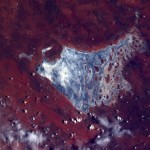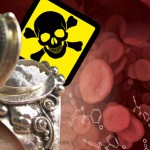
Image: Shutterstock
The dolphins at the National Aquarium in Baltimore are exhaling on cue to provide scientists with samples of their DNA.
Blow sampling, the collecting the exhalations from the blowholes, is now being used by researchers at the University of Queensland as a method of extracting dolphin DNA. This is a less invasive procedure than the current dart biopsying method, which involves collecting a skin and blubber sample using a dart gun, and will minimise the impact on the animals tested.
Samples were taken from six dolphins (five females and one male) at the National Aquarium in Baltimore. For each subject, a test tube was held over the blowhole and the dolphin touched lightly on the melon or forehead. The animals had been trained to exhale in response to this touch, allowing researchers to collect the samples.
The nuclear DNA from blood samples were compared to that of the blow samples to determine whether they matched. The samples all showed a perfect match for each individual. Control samples of seawater were also taken to ensure that there was no contamination of the DNA samples during the collection.
The DNA can be used to assist in determining the conservation status of dolphins, along with behavioural information and population size data. The method is currently being applied in Australia to a population of wild bottlenose dolphins.






